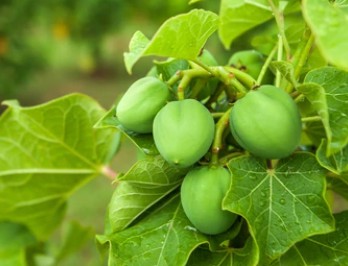Jatropha curcas is a small tree or shrub-like plant, native to tropical America now, distributed in tropical and subtropical regions worldwide. Jatropha curcas has some medicinal value, in addition to its seeds are the raw materials for the manufacture of soaps, lubricating oils, etc., and its oil meal can be used as pesticides and fertilizers. It can also be used to extract biodiesel. The root system of Jatropha curcas is robust and developed, with strong soil-fixing ability, which makes it useful for the rehabilitation of degraded early slopes and the improvement of ecological and economic functions. Jatropha curcas has a robust and developed root system with strong soil-fixing ability, which is useful for vegetation restoration and ecological and economic functions of degraded early slopes, and several unique properties of Jatropha curcas make it an ideal plant to be used for biodiesel production.
Lifeasible is characterized by a highly efficient and abundant plant genetic transformation system. After years of plant genetic transformation experiments, we have screened the best transformation conditions for Jatropha curcas transformation, and our many years of transformation experience can significantly guarantee the success rate of the experiments. We are currently able to provide various plant genetic transformation services, and we also have gene function research, transgenic detection, and other one-stop transgenic technology services; welcome to consult.

Jatropha curcas is an auspicious energy plant because of the high oil content in its seeds, which can be developed into "biodiesel", but its distribution area is narrow, its seed yield is low and the quality of its seed oil needs to be further improved. To expand its cultivation area, new high-yielding and high-quality varieties have been bred, and genetic transformation technology can be utilized to achieve these objectives. The transformation of Jatropha curcas involves several key steps.
Customers can directly provide the constructed genetic transformation vector or entrust our company to carry out gene cloning, expression, knockout, and other types of vector construction; we will complete the entire experimental process from the construction of the vector to obtaining transgenic seedlings for you.

Lifeasible is committed to providing reliable technical support for plant genetic transformation. With our advanced plant transformation platforms and experienced team of experts, we can help a wide range of researchers advance the progress of plant transformation research. Let's embrace the era of life sciences with you on the path of scientific research. If you are interested in us, please feel free to contact us.